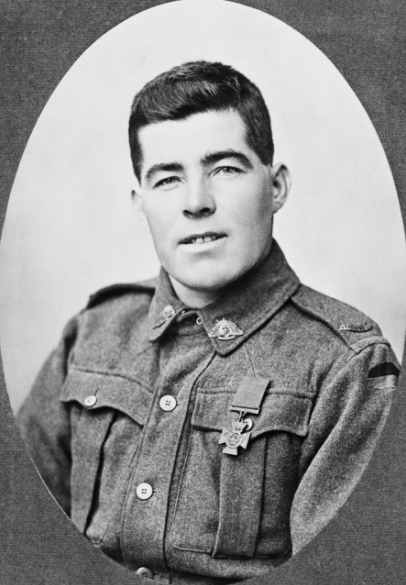Corporal Alexander Burton VC (1893-1915, 22yo)

Alexander Burton came into the world at Kyneton, Victoria in 1893. Following his education, Burton pursued his father’s trade in the ironmongery business, and he enlisted with the 7th Battalion, Australian Imperial Force on 18 August 1914.
The 7th Battalion participated in the Gallipoli landing on 25 April; nevertheless, Burton was confined to observing the assault from a hospital ship due to suffering from a throat ailment. Upon rejoining his unit, he received a posthumous Victoria Cross for exceptional valour at Lone Pine on 9 August.
During the early hours, Turkish forces mounted a powerful counter-offensive against a recently seized trench position defended by Burton, his close companion Lieutenant F. H. Tubb, Corporal W. Dunstan and several other soldiers. Enemy troops advanced through a communication trench and demolished the sandbag barrier, yet Burton, Tubb and Dunstan successfully repelled the attack and reconstructed the fortification. With reinforcement from formidable bombing units, the opposition destroyed the barrier on two additional occasions but faced defeat each time as the defenders rebuilt their protection. Burton lost his life to an explosive device while reinforcing the protective wall. Both Tubb and Dunstan received Victoria Cross honours as well. Burton’s recognition was published on 15 October, and he received a mention in dispatches on 28 January 1916.
No identified burial site exists for Burton, though his memory is preserved on the Lone Pine Memorial at Gallipoli and honoured by an oak tree and bridge at Euroa. His family donated his V.C. to the Australian War Memorial in 1967.
Alexander Burton featured in The Cove's Lone Pine 105th Anniversary Special article if you want to read more about him and his efforts.
Private John Carroll VC (1891-1971, 80yo)

John Carroll entered the world in Brisbane during 1891 and relocated throughout Australia in his youth, finally establishing himself in Kurrawang, Western Australia, where he secured employment as a labourer with the Goldfields Firewood Supply Company. Carroll joined the Australian Imperial Force as a Private on 27 April 1916.
His transfer to the 33rd Battalion occurred on 14 November 1916, leading to front-line deployment at Armentières, France, and on 7 June 1917 his unit took up positions for the Messines operation. During the battle of Messines Ridge on 7 June, he stormed an enemy position and killed four soldiers with his bayonet, subsequently assisting a struggling comrade. As the advance continued, he assaulted a machine-gun team, eliminating three crew members and seizing their weapon, and despite facing intense artillery bombardment and machine-gun assault, he excavated two buried comrades following a shell blast. Throughout the engagement, his battalion remained in combat positions for ninety-six hours while Carroll 'displayed most wonderful courage and fearlessness' continuously. His Victoria Cross award followed, with promotion to Lance Corporal in September. The second battle of Passchendaele on 12 October left him seriously wounded, preventing his return to active duty until June 1918.
Carroll earned the nickname ‘the wild Irishman’ among his A.I.F. colleagues due to his relaxed and carefree disposition. He failed to appear for three scheduled V.C. investiture appointments and required summoning for the fourth; following the ceremony, he entertained himself by exercising the Victoria Cross recipients' privilege to inspect the Buckingham Palace Guard. His death occurred at the Repatriation General Hospital, Hollywood, on 4 October 1971, followed by burial at Karrakatta cemetery with complete military ceremony.
Last Reviewed 06/2025









